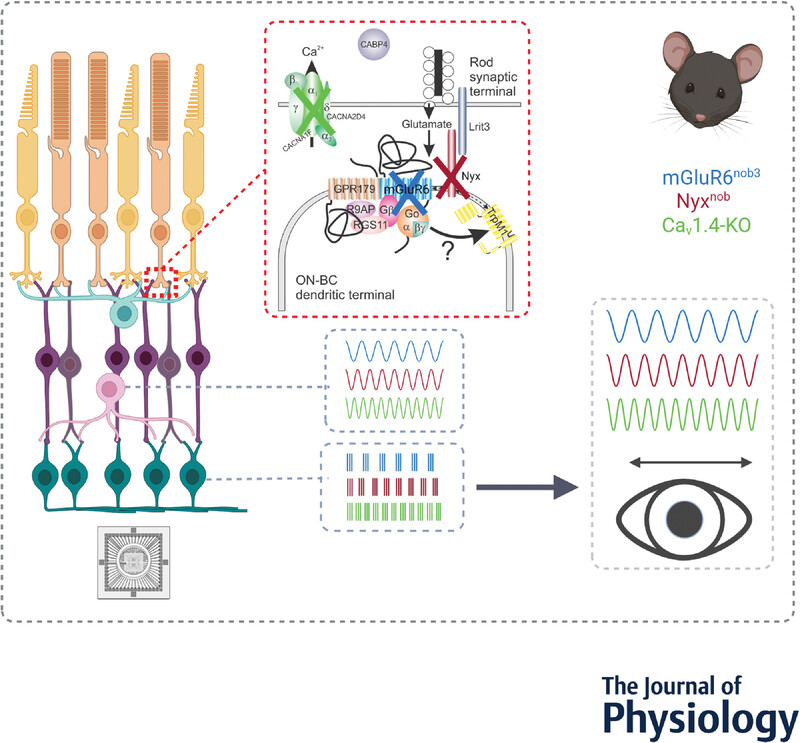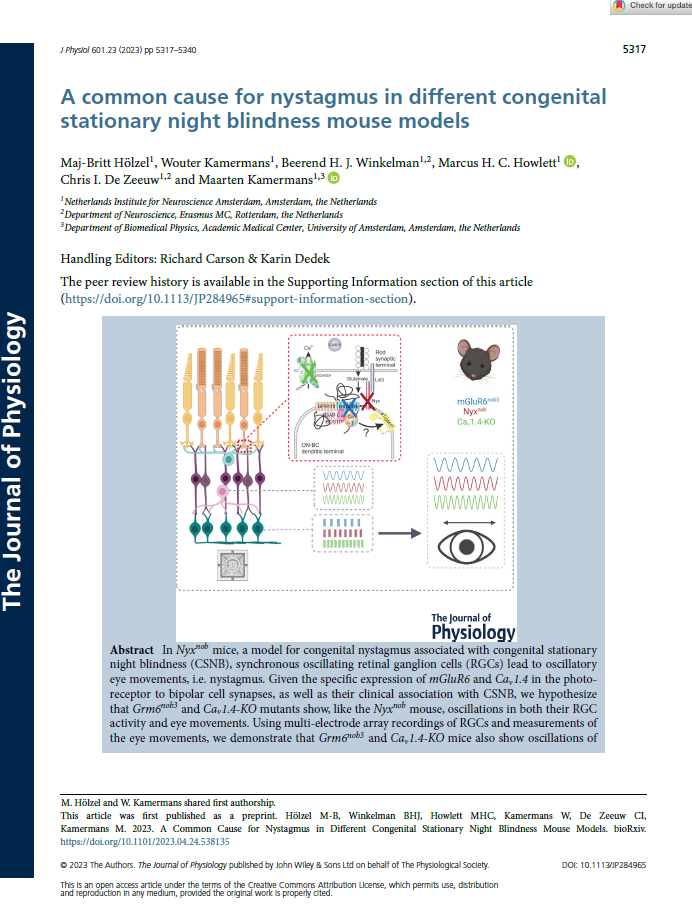Scientific Publications
DBI2 publications
A common cause for nystagmus in different congenital stationary night blindness mouse models
In Nyxnob mice, a model for congenital nystagmus associated with congenital stationary night blindness (CSNB), synchronous oscillating retinal ganglion cells (RGCs) lead to oscillatory eye movements, i.e. nystagmus. Given the specific expression of mGluR6 and Cav1.4 in the photoreceptor to bipolar cell synapses, as well as their clinical association with CSNB, we hypothesize that Grm6nob3 and Cav1.4-KO mutants show, like the Nyxnob mouse, oscillations in both their RGC activity and eye movements. Using multi-electrode array recordings of RGCs and measurements of the eye movements, we demonstrate that Grm6nob3 and Cav1.4-KO mice also show oscillations of their RGCs as well as a nystagmus. Interestingly, the preferred frequencies of RGC activity as well as the eye movement oscillations of the Grm6nob3, Cav1.4-KO and Nyxnob mice differ among mutants, but the neuronal activity and eye movement behaviour within a strain remain aligned in the same frequency domain. Model simulations indicate that mutations affecting the photoreceptor–bipolar cell synapse can form a common cause of the nystagmus of CSNB by driving oscillations in RGCs via AII amacrine cells.

Chris de Zeeuw
10.1113/JP284965
Nystagmus, Retinal Ganglion Cell, Congenital Stationary Night Blindness, Eye Movement

Research areas
Want to join DBI²?
Browse the vacancies page
Contact details
Radboud University
DBI2 Office
Heyendaalseweg 135
6525 AJ Nijmegen
